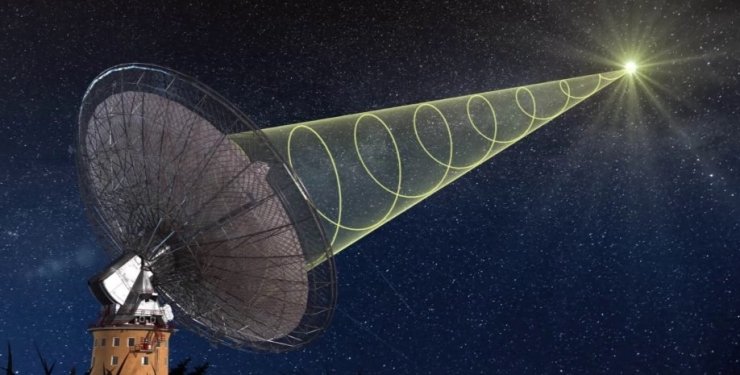
The world’s largest radio telescope, FAST, has discovered a new representative of one of the most mysterious cosmic phenomena.
The world’s largest radio telescope, FAST, located in southwestern China, has detected a new radio signal from deep space, which is a fast radio burst, Xinhua reports.
Fast radio bursts (FRBs) are one of the most mysterious phenomena in space. They are very bright, but very short (from a fraction of a second to several seconds) flashes of electromagnetic radiation that can be detected in radio waves. They were first discovered in 2007 and since then scientists have been trying to find an explanation for these phenomena.
Chinese scientists said that the new BRB is a previously unknown fast radio flare and has been named FRB 20200317A. Scientists have already begun a thorough analysis of the data in the hope of gaining more information about the nature of these phenomena.
It is now known that BRVs mostly occur only once, appear quickly, and disappear quickly. Although over the past few years, scientists have also discovered recurrent BRVs. It is believed that during the emergence of a BRB, as much energy is released as the Sun can release in a few days, but all this happens in a fraction of a second.

Photo: space.com
The most interesting thing is that fast radio bursts occur in completely different parts of the observed space. At the same time, modern theories suggest that these phenomena may be related to the activity of magnetars. These are neutron stars that have the strongest magnetic field. It is trillions of times stronger than our planet’s magnetic field.
Other theories say that GRBs occur when two neutron stars, two white dwarf stars merge, or they occur when a neutron star turns into a stellar mass black hole.
Astronomers also suggest that in fact, fast radio bursts have much higher energy during their appearance than that detected by ground-based telescopes. That is, these radio pulses lose some of their energy while traveling huge distances.
Over the past few years, scientists have been able to detect several hundred strange radio signals, but have not yet been able to figure out what causes them. Research in this area is ongoing.
As for the FAST radio telescope, which is the world’s largest single-dish radio telescope, its area of reception of radio waves from space is equal to 30 football fields. The observatory began its work in early 2020. And that year, scientists used FAST to detect 4 fast radio bursts.

